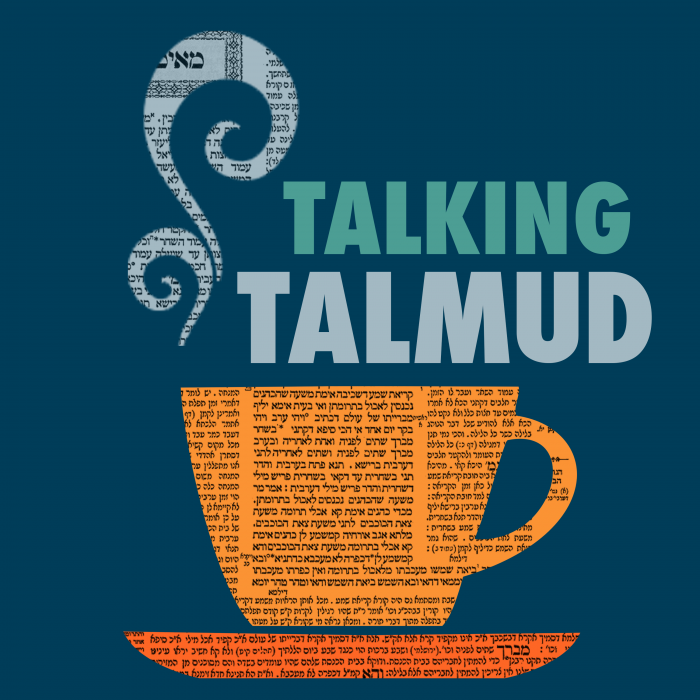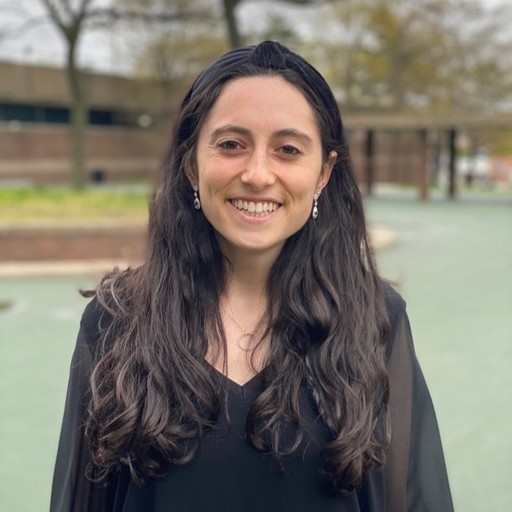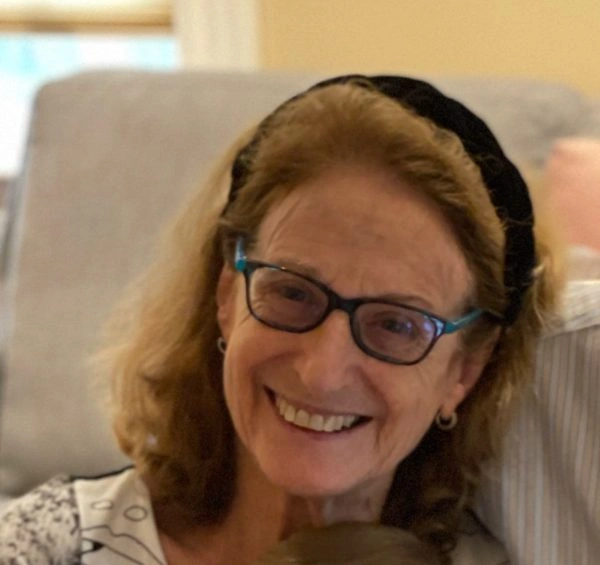Shevuot 13
בְּעוֹמֵד בְּמִרְדּוֹ, וְרַבִּי הִיא. דְּתַנְיָא: רַבִּי אוֹמֵר, עַל כׇּל עֲבֵירוֹת שֶׁבַּתּוֹרָה, בֵּין עָשָׂה תְּשׁוּבָה בֵּין לֹא עָשָׂה תְּשׁוּבָה – יוֹם הַכִּפּוּרִים מְכַפֵּר; חוּץ מִפּוֹרֵק עוֹל וּמְגַלֶּה פָּנִים בַּתּוֹרָה וּמֵפֵר בְּרִית בְּבָשָׂר – שֶׁאִם עָשָׂה תְּשׁוּבָה, יוֹם הַכִּפּוּרִים מְכַפֵּר; וְאִם לָאו, אֵין יוֹם הַכִּפּוּרִים מְכַפֵּר.
The mishna is referring to a case where the person did not repent and persists in his rebellion, and it is in accordance with the opinion of Rabbi Yehuda HaNasi, that even for such a case Yom Kippur and the scapegoat will atone. As it is taught in a baraita: Rabbi Yehuda HaNasi says: For all transgressions that are stated in the Torah, whether one repented, or whether one did not repent, Yom Kippur atones, except for one who divests himself of the yoke of Heaven, by denying God’s existence, and one who reveals facets of the Torah that differ from its true meaning, and one who nullifies the covenant of circumcision of the flesh. For these, if one repented, Yom Kippur atones, and if not, Yom Kippur does not atone.
מַאי טַעְמָא דְּרַבִּי? דְּתַנְיָא: ״כִּי דְבַר ה׳ בָּזָה״ – זֶה הַפּוֹרֵק עוֹל וּמְגַלֶּה פָּנִים בַּתּוֹרָה. ״וְאֶת מִצְוָתוֹ הֵפֵר״ – זֶה הַמֵּפֵר בְּרִית בַּבָּשָׂר. ״הִכָּרֵת תִּכָּרֵת״ – הִכָּרֵת לִפְנֵי יוֹם הַכִּפּוּרִים, תִּכָּרֵת לְאַחַר יוֹם הַכִּפּוּרִים.
The Gemara asks: What is the reasoning of Rabbi Yehuda HaNasi? It is as it is taught in a baraita in interpretation of the verse: “For he scorned the word of the Lord and nullified His commandment; that person will be cut off [hikkaret tikkaret], his sin is upon him” (Numbers 15:31): “For he scorned the word of the Lord”; this is referring to one who divests himself of the yoke of Heaven and one who reveals facets of the Torah that differ from its true meaning. “And nullified His commandment”; this is referring to one who nullified the covenant of circumcision of the flesh. The use of the double verb form hikkaret tikkaret teaches that he will be cut off, i.e., he is liable to receive karet, before Yom Kippur, and he will still be cut off after Yom Kippur, as Yom Kippur does not atone for him.
יָכוֹל אֲפִילּוּ עָשָׂה תְּשׁוּבָה? תַּלְמוּד לוֹמַר: ״עֲוֹנָהּ בָּהּ״ – לֹא אָמַרְתִּי אֶלָּא בִּזְמַן שֶׁעֲוֹנָהּ בָּהּ.
One might have thought that this applies even if he repented. To counter this, the verse states: “His sin is upon him,” by which God indicates: I said that Yom Kippur does not atone for these sins only when his sin is still upon him, as he did not repent. It is apparent from this baraita that it is only for the three sins mentioned that Yom Kippur does not atone without repentance, but Yom Kippur atones for other sins even if one did not repent.
וְרַבָּנַן – ״הִכָּרֵת״ בָּעוֹלָם הַזֶּה, ״תִּכָּרֵת״ לָעוֹלָם הַבָּא, ״עֲוֹנָהּ בָּהּ״ – שֶׁאִם עָשָׂה תְּשׁוּבָה וָמֵת, מִיתָה מְמָרֶקֶת.
And with regard to the Rabbis who disagree with Rabbi Yehuda HaNasi, how do they interpret the verse? If someone commits one of the three sins mentioned, then he is cut off [hikkaret] from life in this world, and he will be cut off [tikkaret] in the World-to-Come. The phrase “His sin is upon him” teaches that if he repented and died, his death cleanses him of his sin.
וּמִי מָצֵית מוֹקְמַתְּ לַהּ כְּרַבִּי?! וְהָא מִדְּסֵיפָא רַבִּי יְהוּדָה הִיא, רֵישָׁא נָמֵי רַבִּי יְהוּדָה הִיא! דְּקָתָנֵי סֵיפָא: אֶחָד יִשְׂרָאֵל וְאֶחָד כֹּהֲנִים וְאֶחָד כֹּהֵן מָשׁוּחַ; וּמַאן אִית לֵיהּ הַאי סְבָרָא – רַבִּי יְהוּדָה; מִכְּלָל דְּרֵישָׁא רַבִּי יְהוּדָה.
The Gemara asks: And can you interpret the mishna to be in accordance with the opinion of Rabbi Yehuda HaNasi? But from the fact that the latter clause is in accordance with the opinion of Rabbi Yehuda, by inference, the first clause is also in accordance with the opinion of Rabbi Yehuda, but not of Rabbi Yehuda HaNasi, as the latter clause of the mishna teaches: Israelites and priests and the anointed priest, i.e., the High Priest, all equally achieve atonement from the scapegoat. And who accepts this reasoning? Rabbi Yehuda, as the Gemara will demonstrate. By inference, the first clause is also in accordance with the opinion of Rabbi Yehuda, not of Rabbi Yehuda HaNasi.
אָמַר רַב יוֹסֵף: רַבִּי הִיא, וְסָבַר לַהּ כְּרַבִּי יְהוּדָה.
Rav Yosef said: It is possible that the entire mishna is in accordance with the opinion of Rabbi Yehuda HaNasi, and the latter clause does not pose a difficulty, because with regard to whether priests achieve atonement through the scapegoat, he holds in accordance with the opinion of Rabbi Yehuda.
אֲמַר לֵיהּ אַבָּיֵי: דַּוְקָא קָאָמַר מָר – רַבִּי סָבַר לַהּ כְּרַבִּי יְהוּדָה, אֲבָל רַבִּי יְהוּדָה לָא סָבַר לַהּ כְּרַבִּי? אוֹ דִלְמָא, מִדְּרַבִּי סָבַר לַהּ כְּרַבִּי יְהוּדָה, אַף רַבִּי יְהוּדָה סָבַר לַהּ נָמֵי כְּרַבִּי; מִיהוּ אוֹרְחָא דְמִילְּתָא קָתָנֵי – לְמֵימַר דְּתַלְמִיד סָבַר לַהּ כְּרַבֵּיהּ?
Abaye said to him: Does the Master mean specifically what he is saying, i.e., that Rabbi Yehuda HaNasi holds in accordance with the opinion of Rabbi Yehuda with regard to whether the scapegoat atones for both Israelites and priest, but Rabbi Yehuda does not hold in accordance with the opinion of Rabbi Yehuda HaNasi with regard to atonement for one who did not repent? Or perhaps from the fact that Rabbi Yehuda HaNasi holds in accordance with the opinion of Rabbi Yehuda, it follows that Rabbi Yehuda also holds in accordance with the opinion of Rabbi Yehuda HaNasi, but the reason that Rav Yosef did not make this clear is that he teaches the matter in the manner in which it typically occurs, which is to say that a disciple, in this case, Rabbi Yehuda HaNasi, holds in accordance with the opinion of his teacher, i.e., Rabbi Yehuda.
אֲמַר לֵיהּ: אִין, דַּוְקָא קָאָמֵינָא – רַבִּי סָבַר לַהּ כְּרַבִּי יְהוּדָה, אֲבָל רַבִּי יְהוּדָה לָא סָבַר לַהּ כְּרַבִּי.
Rav Yosef said to him: Yes, I mean specifically what I was saying: Rabbi Yehuda HaNasi holds in accordance with the opinion of Rabbi Yehuda, but Rabbi Yehuda does not hold in accordance with the opinion of Rabbi Yehuda HaNasi.
דְּתַנְיָא: יָכוֹל יְהֵא יוֹם הַכִּפּוּרִים מְכַפֵּר עַל שָׁבִים וְעַל שֶׁאֵינָן שָׁבִים? וְדִין הוּא – הוֹאִיל וְחַטָּאת וְאָשָׁם מְכַפְּרִין, וְיוֹם הַכִּפּוּרִים מְכַפֵּר; מָה חַטָּאת וְאָשָׁם – אֵין מְכַפְּרִין אֶלָּא עַל הַשָּׁבִים, אַף יוֹם הַכִּפּוּרִים – אֵין מְכַפֵּר אֶלָּא עַל הַשָּׁבִים! מָה לְחַטָּאת וְאָשָׁם – שֶׁאֵין מְכַפְּרִין עַל הַמֵּזִיד כַּשּׁוֹגֵג; תֹּאמַר לְיוֹם הַכִּפּוּרִים – שֶׁמְּכַפֵּר עַל הַמֵּזִיד כַּשּׁוֹגֵג?!
As it is taught in a baraita recorded in the Sifra: One might have thought that Yom Kippur would atone for those who repent and for those who do not repent, and this assertion is supported by the following logical inference: Although it would appear that since a sin-offering and a guilt-offering atone and Yom Kippur atones, it should follow that just as a sin-offering and a guilt-offering atone only for those who repent, so too, Yom Kippur atones only for those who repent, this comparison is flawed. One can claim: What is notable about a sin-offering and a guilt-offering? They are notable in that they do not atone for intentional sins like they do for unwitting sins. Can you say the same about Yom Kippur, which does atone for intentional sins as it does for unwitting sins?
הוֹאִיל וּמְכַפֵּר עַל הַמֵּזִיד כַּשּׁוֹגֵג, יְכַפֵּר עַל שָׁבִים וְעַל שֶׁאֵינָן שָׁבִים! תַּלְמוּד לוֹמַר: ״אַךְ״ – חָלַק.
The baraita continues: Since it is the case that the atonement of Yom Kippur is more far-reaching in that it atones for intentional sins as it does for unwitting sins, it follows that it should atone both for those who repent and for those who do not repent. To counter this, the verse states: “Yet on the tenth day of this seventh month it is Yom Kippur” (Leviticus 23:27). The word “yet” serves to divide and limit the atonement of Yom Kippur in that it atones only for those who repent.
סְתָם סִיפְרָא מַנִּי – רַבִּי יְהוּדָה; וְקָאָמַר: שָׁבִים אִין, לֹא שָׁבִים לָא.
Rav Yosef attributes the baraita to Rabbi Yehuda: Whose opinion is expressed by the unattributed baraitot in the Sifra? Rabbi Yehuda. And he says: For those who repent, yes, Yom Kippur atones, but for those who do not repent, Yom Kippur does not atone.
וְרָמֵי סְתָם סִיפְרָא אַסְּתַם סִיפְרָא – דְּתַנְיָא: יָכוֹל לֹא יְהֵא יוֹם הַכִּפּוּרִים מְכַפֵּר, אֶלָּא אִם כֵּן הִתְעַנָּה בּוֹ, וּקְרָאוֹ מִקְרָא קֹדֶשׁ, וְלֹא עָשָׂה בּוֹ מְלָאכָה; לֹא הִתְעַנָּה בּוֹ, וְלֹא קְרָאוֹ מִקְרָא קֹדֶשׁ, וְעָשָׂה בּוֹ מְלָאכָה – מִנַּיִן? תַּלְמוּד לוֹמַר: ״יוֹם כִּפֻּרִים הוּא״ מִכׇּל מָקוֹם!
The Gemara asks: But raise a contradiction, setting one unattributed baraita in the Sifra, i.e., the one just cited, against another unattributed baraita in the Sifra, as in another baraita there it is taught: One might have thought that Yom Kippur would atone only if one fasted on it and declared it a holy convocation and did not perform labor on it. From where is it derived that even if one did not fast on it and did not declare it a holy convocation and performed labor on it, that it still atones? The verse states: “Yet on the tenth day of this seventh month it is Yom Kippur” (Leviticus 23:27). The additional emphasis on “it is” serves to teach that the day atones in any case. This baraita contradicts the one cited above that states clearly that Yom Kippur atones only for those who repent.
אָמַר אַבָּיֵי: לָא קַשְׁיָא; הָא רַבִּי, וְהָא רַבִּי יְהוּדָה.
Abaye said: This is not difficult: This second baraita is in accordance with the opinion of Rabbi Yehuda HaNasi, and that first baraita is in accordance with the opinion of Rabbi Yehuda.
רָבָא אָמַר: הָא וְהָא רַבִּי, וּמוֹדֶה רַבִּי בְּכָרֵת דְּיוֹמָא. דְּאִי לָא תֵּימָא הָכִי, כָּרֵת דְּיוֹם הַכִּפּוּרִים לְרַבִּי לֵית לֵיהּ.
Rava said: Both this baraita and that baraita are in accordance with the opinion of Rabbi Yehuda HaNasi, who holds that Yom Kippur atones for those who do not repent, but even Rabbi Yehuda HaNasi concedes that with regard to avoiding the punishment of karet incurred for violating the day of Yom Kippur, Yom Kippur atones and one is not liable to be punished with karet only if one repented for the sin of violating the day of Yom Kippur. Perforce he must concede this point, as if you do not say so, then according to Rabbi Yehuda HaNasi, there would be no instance in which one would be liable to be punished with karet for violating Yom Kippur.
אַלְּמָה לָא? מַשְׁכַּחַתְּ לַהּ – כְּגוֹן דַּעֲבַד בְּלֵילְיָא וּמִית, דְּלָא אֲתָא יְמָמָא לְכַפּוֹרֵי לֵיהּ!
The Gemara questions this proof: Why not? You could find it in a case where he performed labor on the night of Yom Kippur and died that night, as in such a case, the daytime of Yom Kippur, which is the part of Yom Kippur that effects atonement, never came to atone for him.
אֶלָּא אֵימָא:
Rather, say that Rava’s proof is as follows:
כָּרֵת דִּימָמָא לְרַבִּי לֵית לֵיהּ.
It must be that Rabbi Yehuda HaNasi concedes that Yom Kippur does not atone for one who violates the day itself and does not repent, as if you do not say so, according to Rabbi Yehuda HaNasi, there would be no instance in which a person would be liable to receive karet for violating Yom Kippur in the daytime.
אַלְּמָה לָא? מַשְׁכַּחַתְּ לַהּ דַּאֲכַל אוּמְצָא וְחַנְקֵיהּ וּמִית; אִי נָמֵי דַּאֲכַל סָמוּךְ לִשְׁקִיעַת הַחַמָּה – דְּלָא הֲוָה שְׁהוּת לְכַפּוֹרֵי לֵיהּ!
The Gemara questions this proof: Why not? You could find it in a case where he ate a piece of meat, and while he was eating it choked him and he died, or in a case where he ate immediately before sunset at the end of the day. Even if one holds that Yom Kippur does atone for violations of the day itself, in these cases it could not, as there was no time after the violation for the day to atone for him, in the first case because he was already dead, and in the second case because it was no longer Yom Kippur.
אֶחָד יִשְׂרָאֵל וְאֶחָד כֹּהֲנִים וְאֶחָד כֹּהֵן מָשׁוּחַ.
§ The mishna (2b) states: Israelites and priests and the anointed priest, i.e., the High Priest, equally achieve atonement. What is the difference between Israelites, priests, and the anointed priest? The difference is only that the priests achieve atonement for their defiling of the Temple or its sacrificial foods through the bull that the High Priest offers on Yom Kippur, whereas the Israelites achieve atonement for their transgressions through the goats that are sacrificed on Yom Kippur.
הָא גּוּפַאּ קַשְׁיָא – קָתָנֵי: אֶחָד יִשְׂרָאֵל וְאֶחָד כֹּהֲנִים וְאֶחָד כֹּהֵן מָשׁוּחַ; וַהֲדַר תָּנֵי: מָה בֵּין יִשְׂרָאֵל לְכֹהֲנִים וּלְכֹהֵן מָשׁוּחַ! אָמַר רַב יְהוּדָה, הָכִי קָאָמַר: אֶחָד יִשְׂרָאֵל וְאֶחָד כֹּהֲנִים וְאֶחָד כֹּהֵן מָשׁוּחַ מִתְכַּפְּרִין בְּשָׂעִיר הַמִּשְׁתַּלֵּחַ בִּשְׁאָר עֲבֵירוֹת, וְאֵין חִילּוּק בֵּינֵיהֶן. וּמָה בֵּין יִשְׂרָאֵל לְכֹהֲנִים וּלְכֹהֵן מָשׁוּחַ? אֶלָּא שֶׁהַפָּר מְכַפֵּר עַל הַכֹּהֲנִים עַל טוּמְאַת מִקְדָּשׁ וְקָדָשָׁיו וְכוּ׳.
The Gemara asks: This mishna itself is difficult, as it teaches: Both Israelites and priests and the anointed priest equally achieve atonement. But then it teaches: What is the difference between Israelites, priests, and the anointed priest? Rav Yehuda said that this is what the mishna is saying: Both Israelites and priests and the anointed priest equally achieve atonement through the scapegoat for transgressions other than the defiling of the Temple or its sacrificial foods, and in this regard there is no distinction between them. But what is the difference between Israelites, priests, and the anointed priest? The difference is only that the bull of the High Priest that he offers on Yom Kippur atones for the priests for their defiling of the Temple or its sacrificial foods, whereas the Israelites achieve atonement for their transgressions through the goats that are sacrificed on Yom Kippur.
וּמַנִּי – רַבִּי יְהוּדָה הִיא. דְּתַנְיָא: ״וְכִפֶּר אֶת מִקְדַּשׁ הַקֹּדֶשׁ״ – זֶה לִפְנַי וְלִפְנִים; ״אֶת אֹהֶל מוֹעֵד״ – זֶה הֵיכָל; ״מִזְבֵּחַ״ – כְּמַשְׁמָעוֹ; ״יְכַפֵּר״ – אֵלּוּ עֲזָרוֹת; ״כֹּהֲנִים״ – כְּמַשְׁמָעוֹ; ״עַם הַקָּהָל״ – אֵלּוּ יִשְׂרָאֵל; ״יְכַפֵּר״ – אֵלּוּ הַלְוִיִּם;
And whose opinion is expressed by the mishna? It is Rabbi Yehuda, as it is taught in a baraita in exposition of the verse: “He shall bring atonement upon the sanctum of the sacred, and he shall effect atonement upon the Tent of Meeting and the altar, and upon the priests and upon all the people of the congregation shall he bring atonement” (Leviticus 16:33): “He shall bring atonement upon the sanctum of the sacred”; this is referring to the innermost sanctum, i.e., the Holy of Holies. “Upon the Tent of Meeting”; this is referring to the Sanctuary. “And the altar”; this is understood in accordance with its plain meaning. “He shall effect atonement”; this is referring to the Temple courtyards. “And upon the priests”; this is understood in accordance with its plain meaning. “And upon all the people”; these are the Israelites. “Shall he bring atonement”; this is referring to the Levites.
הוּשְׁווּ כּוּלָּן לְכַפָּרָה אַחַת, שֶׁמִּתְכַּפְּרִין בְּשָׂעִיר הַמִּשְׁתַּלֵּחַ בִּשְׁאָר עֲבֵירוֹת. דִּבְרֵי רַבִּי יְהוּדָה.
All of them are equated with regard to the fact that they are all atoned for through one atonement, i.e., that they are atoned for by the scapegoat for all transgressions other than the defiling of the Temple or its sacrificial foods. This is the statement of Rabbi Yehuda.
רַבִּי שִׁמְעוֹן אוֹמֵר: כְּשֵׁם שֶׁדַּם שָׂעִיר הַנַּעֲשֶׂה בִּפְנִים מְכַפֵּר עַל יִשְׂרָאֵל עַל טוּמְאַת מִקְדָּשׁ וְקָדָשָׁיו, כָּךְ דַּם הַפָּר מְכַפֵּר עַל הַכֹּהֲנִים עַל טוּמְאַת מִקְדָּשׁ וְקָדָשָׁיו. וּכְשֵׁם שֶׁוִּידּוּיוֹ שֶׁל שָׂעִיר הַמִּשְׁתַּלֵּחַ מְכַפֵּר עַל יִשְׂרָאֵל בִּשְׁאָר עֲבֵירוֹת, כָּךְ וִידּוּיוֹ שֶׁל פָּר מְכַפֵּר עַל הַכֹּהֲנִים בִּשְׁאָר עֲבֵירוֹת.
The baraita continues: Rabbi Shimon says: Just as the blood of the goat whose blood presentation is performed inside the Sanctuary atones for Israelites for their defiling of the Temple or its sacrificial foods, so too, the blood of the bull of the High Priest, whose blood presentation is also performed inside the Sanctuary, atones for the priests for their defiling of the Temple or its sacrificial foods. And just as the confession made over the scapegoat atones for Israelites for other transgressions, so too, the confession made over the bull atones for the priests for other transgressions. It is apparent from the baraita that it is only according to the opinion of Rabbi Yehuda that the scapegoat atones for both Israelites and priests.
וּלְרַבִּי שִׁמְעוֹן, הָא וַדַּאי הוּשְׁווּ! מַאי הוּשְׁווּ – דִּבְנֵי כַּפָּרָה נִינְהוּ; מִיהוּ כֹּל חַד וְחַד מְכַפַּר בִּדְנַפְשֵׁיהּ.
The Gemara analyzes Rabbi Shimon’s opinion: And according to Rabbi Shimon, one can ask: Weren’t both Israelites and priests certainly equated in the verse in Leviticus? The Gemara explains: According to his opinion, in what way are they equated in the verse? They are equated in that they are all subject to atonement on Yom Kippur; but each one of the groups achieves atonement in its own way.
מַאי טַעְמֵיהּ דְּרַבִּי שִׁמְעוֹן? דִּכְתִיב: ״וְלָקַח אֶת שְׁנֵי הַשְּׂעִירִם״ – אִיתַּקַּשׁ שָׂעִיר הַמִּשְׁתַּלֵּחַ לְשָׂעִיר הַנַּעֲשֶׂה בִּפְנִים; מָה שָׂעִיר הַנַּעֲשֶׂה בִּפְנִים אֵינוֹ מְכַפֵּר עַל הַכֹּהֲנִים עַל טוּמְאַת מִקְדָּשׁ וְקָדָשָׁיו, דִּכְתִיב בֵּיהּ: ״אֲשֶׁר לָעָם״; אַף שָׂעִיר הַמִּשְׁתַּלֵּחַ אֵינוֹ מְכַפֵּר עַל הַכֹּהֲנִים בִּשְׁאָר עֲבֵירוֹת.
The Gemara asks: What is the reason of Rabbi Shimon, who holds that priests are not atoned for by the scapegoat? As it is written: “He shall take the two goats” (Leviticus 16:7); one is used for the scapegoat and the other for the internal goat. With this verse, the scapegoat is juxtaposed with the goat whose blood presentation is performed inside the Sanctuary. It teaches that just as the goat whose blood presentation is performed inside does not atone for the priests for their defiling of the Temple or its sacrificial foods, as it is written with regard to that goat: “The goat sin-offering of the people” (Leviticus 16:15), which indicates that it atones for Israelites and not for the priests, so too, the scapegoat does not atone for the priests for their other transgressions.
וְרַבִּי יְהוּדָה אָמַר לָךְ: לְהָכִי אִיתַּקּוּשׁ – שֶׁיִּהְיוּ שָׁוִים בְּמַרְאֶה וּבְקוֹמָה וּבְדָמִים הוּא דַּאֲתָא.
And as for Rabbi Yehuda, how does he understand the juxtaposition? He could have said to you: It is only for this reason that the goats are juxtaposed: The juxtaposition comes to teach that they should be similar in appearance and in height and in value. They are not similar in the atonement that they effect.
מַאן תְּנָא לְהָא דְּתָנוּ רַבָּנַן: ״וְשָׁחַט אֶת שְׂעִיר הַחַטָּאת אֲשֶׁר לָעָם״ – שֶׁאֵין הַכֹּהֲנִים מִתְכַּפְּרִין בּוֹ. וּבַמֶּה מִתְכַּפְּרִין? בְּפָרוֹ שֶׁל אַהֲרֹן.
The Gemara asks: Who is the tanna who taught that which the Sages taught in a baraita: The verse states with regard to the internal goat: “He shall slaughter the goat sin-offering of the people” (Leviticus 16:15); the term “of the people” excludes Aaron and the priests, and therefore indicates that the priests do not achieve atonement through that goat. But then, through what do they achieve atonement? Presumably, through the bull of Aaron, i.e., the bull of the High Priest.
יָכוֹל לֹא יִתְכַּפְּרוּ בְּפָרוֹ שֶׁל אַהֲרֹן; שֶׁהֲרֵי כְּבָר נֶאֱמַר: ״אֲשֶׁר לוֹ״ – מֵעַתָּה אֵין לָהֶן כַּפָּרָה? כְּשֶׁהוּא אוֹמֵר: ״יְכַפֵּר עַל הַכֹּהֲנִים״ – מָצִינוּ לָהֶן כַּפָּרָה.
One might have thought that they would also not achieve atonement through the bull of Aaron, as it is already stated: “Aaron shall bring near his own bull sin-offering” (Leviticus 16:6), which indicates that it atones only for Aaron’s transgressions, not for the transgressions of others. And if that is so, then they do not have any means through which to achieve atonement. But when the verse states: “And he shall effect atonement…upon the priests” (Leviticus 16:33), we have clearly found that they do have a means of achieving atonement.
בַּמָּה הֵן מִתְכַּפְּרִין? מוּטָב שֶׁיִּתְכַּפְּרוּ בְּפָרוֹ שֶׁל אַהֲרֹן – שֶׁהֲרֵי הוּתַּר מִכְּלָלוֹ אֵצֶל בֵּיתוֹ, וְאַל יִתְכַּפְּרוּ בְּשָׂעִיר הַנַּעֲשֶׂה בִּפְנִים – שֶׁלֹּא הוּתַּר מִכְּלָלוֹ אֵצֶל בֵּיתוֹ.
The baraita continues: Through which means then do they achieve atonement? Do they achieve it through the internal goat or the bull of Aaron? It is better to say that they achieve atonement through the bull of Aaron, as in any event, with regard to his household, an exception was made to its rule that it atones only for Aaron, and his household also achieves atonement from his bull. It is therefore not unreasonable to say that the priesthood should also achieve atonement from his bull. And one should not say that they achieve atonement through the goat whose blood presentation is performed inside the Sanctuary, as it is not found with regard to Aaron’s household that an exception was made to its rule that it atones for the people, as his household does not achieve atonement from the scapegoat.
וְאִם נַפְשְׁךָ לוֹמַר – הֲרֵי הוּא אוֹמֵר: ״בֵּית אַהֲרֹן בָּרְכוּ אֶת ה׳, בֵּית הַלֵּוִי בָּרְכוּ אֶת ה׳, יִרְאֵי ה׳ בָּרְכוּ אֶת ה׳״.
And if it is your wish to say that this reasoning can be refuted, one can cite another proof, as the verse states: “House of Israel, bless the Lord; house of Aaron, bless the Lord; house of Levi, bless the Lord; those who fear the Lord, bless the Lord” (Psalms 135:19–20). It is apparent from this verse that “house of Aaron” is referring to all priests and not just to Aaron’s immediate household, and so it is reasonable that Aaron’s bull should atone for them.
מַאן תַּנָּא? אָמַר רַבִּי יִרְמְיָה: דְּלָא כְּרַבִּי יְהוּדָה; דְּאִי רַבִּי יְהוּדָה, הָאָמַר: ״כֹּהֲנִים יֵשׁ לָהֶן כַּפָּרָה בְּשָׂעִיר הַמִּשְׁתַּלֵּחַ״. וּמַנִּי? רָבָא אָמַר: רַבִּי שִׁמְעוֹן הִיא, דְּאָמַר: ״כֹּהֲנִים אֵין לָהֶם כַּפָּרָה בְּשָׂעִיר הַמִּשְׁתַּלֵּחַ״.
The Gemara repeats its question about this baraita: Who is the tanna who taught this baraita? Rabbi Yirmeya says: It is not in accordance with the opinion of Rabbi Yehuda, as, if one suggests that it is in accordance with the opinion of Rabbi Yehuda, one can counter: Doesn’t he say that the priests have a means of atonement through the scapegoat, whereas the baraita indicates that they do not, as it states that if they do not achieve atonement through the bull of Aaron, then they do not have any means through which to achieve atonement? But then, whose opinion is expressed? Rava says: It is the opinion of Rabbi Shimon, who says that the priests do not have a means of achieving atonement through the scapegoat.
אַבָּיֵי אָמַר: אֲפִילּוּ תֵּימָא רַבִּי יְהוּדָה, הָכִי קָאָמַר: מֵעַתָּה אֵין לָהֶם כַּפָּרָה בְּטוּמְאַת מִקְדָּשׁ וְקָדָשָׁיו? כְּשֶׁהוּא אוֹמֵר: ״יְכַפֵּר עַל הַכֹּהֲנִים״, מָצִינוּ שֶׁיֵּשׁ לָהֶן כַּפָּרָה בִּשְׁאָר עֲבֵירוֹת; וּכְמוֹ דְּמָצִינוּ שֶׁיֵּשׁ לָהֶן כַּפָּרָה בִּשְׁאָר עֲבֵירוֹת, כָּךְ יֵשׁ לָהֶן כַּפָּרָה
Abaye said: You may even say that the baraita is in accordance with the opinion of Rabbi Yehuda, and this is what it is saying: If that is so, that the priests do not achieve atonement through the bull of Aaron, then they do not have any means through which to achieve atonement for the defiling of the Temple or its sacrificial foods. When the verse states: “And he shall effect atonement…upon the priests,” we have clearly found that they do have a means of atonement for other transgressions. And it follows that just as we have found that they have a means of atonement for other transgressions, as Israelites do, so too, they must also have a means of atonement






















